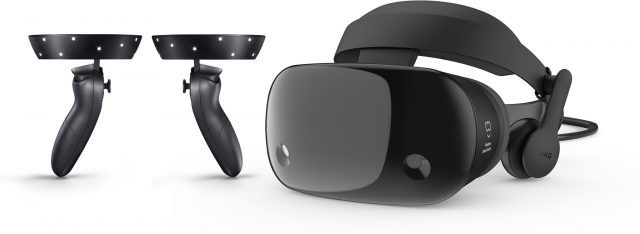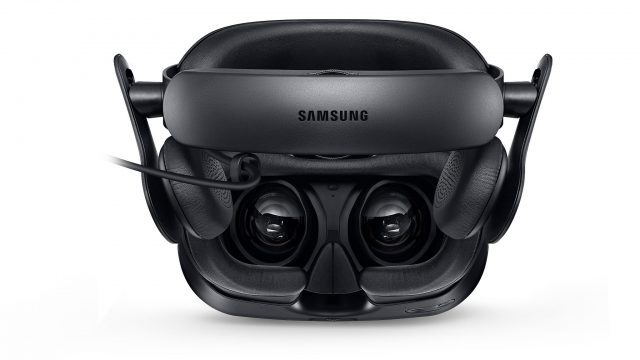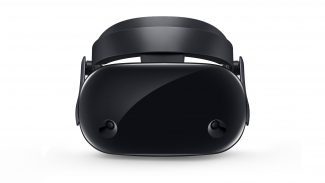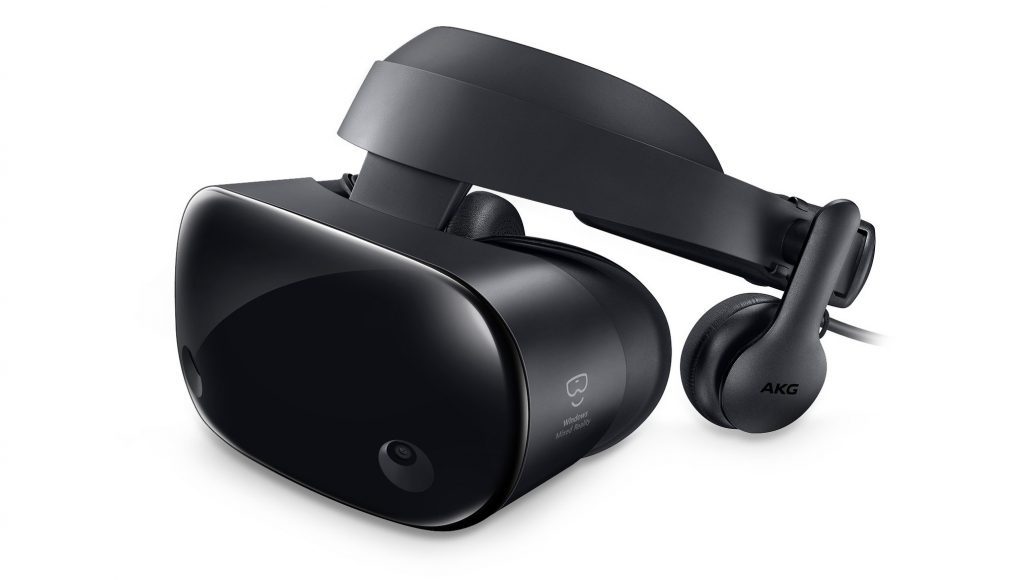Last week, images of the Samsung Odyssey Windows VR headset leaked online, and although they seemed plenty legit, a new leak from Microsoft’s own website confirms the existence of the device and offers new details of this premium headset.
When it comes to the Windows “Mixed Reality” VR headsets launching soon from Dell, Asus, Acer, HP, and Lenovo, they’re all essentially the same product with a different look and branding—we’re talking same display, same lenses, same resolution, same, same, same. I was baffled to see that not one of those companies had found a way to offer differentiation, say, in the form of the integrated audio.

Samsung it seems was willing and ready to go beyond Microsoft’s reference design, and the result is a device which is clearly the premium option among the first wave of Windows VR headsets. The Samsung Odyssey Windows VR headset was spotted on a product page on Microsoft’s website touting a $500 price point (with motion controllers included) and a November 6th release date. It seems quite likely the headset will see a formal announcement during Microsoft’s Mixed Reality event today (Tuesday).
Pack Leading Specs
So what makes it premium compared to the other Windows VR headsets? First is the resolution, which, at 1,440 x 1,600 per eye, is slightly higher than the other Windows VR headsets (1,440 x 1440), and quite a bit higher than the Rift and Vive (1,080 x 1,200). And while the other Windows VR headsets, to our knowledge, all use LCD displays, Samsung’s headset uses an OLED display which is likely to provide better color and low-persistence performance.

Next is the field of view. While we’ve seen varying reports of the field of view of the other Windows VR headsets, the most common number we’ve seen is 95 degrees (which we presume to be measured diagonally). The leaked product page for the Samsung Odyssey headset says “up to 110 degrees,” which could put it on par with the Rift and Vive. From the leaked images we can also see that the headset has a hardware IPD adjustment (for changing the distance between the lenses), which lets users dial in the ‘sweet spot’ where the image is the sharpest for their specific IPD. The other Windows VR headsets lack a hardware IPD adjustment.

And then there’s the integrated headphones, which we believe is a ‘must’ for high-end VR. The Samsung Odyssey headset is the only Windows VR headset so far to offer them, and it appears from the images that they’ve added a volume up/down button directly onto the underside of the headset (though we wonder if it will be a bit awkward to press while holding a controller). The leaked images show AKG branding on the headphones, an Austria-based acoustics company with which Samsung has previously worked.
Friends (could) Become Foes
What’s especially interesting about the Samsung Odyssey VR headset is its price. At $500 it leads the Windows VR pack on cost as the premium option, but more importantly it’s the exact same price as the Oculus Rift, putting the headsets in direct competition with one another.
That’s an interesting twist in the relationship of the two companies who previously worked closely together to create the Samsung Gear VR mobile headset, which is sold by Samsung but draws its apps from the Oculus content platform. But that relationship on the mobile side recently become rocky as well. We’ll have to wait and see if the companies end up competing on both fronts, or if they’ll manage to remain friendly on mobile while competing for headsets on the PC side.







